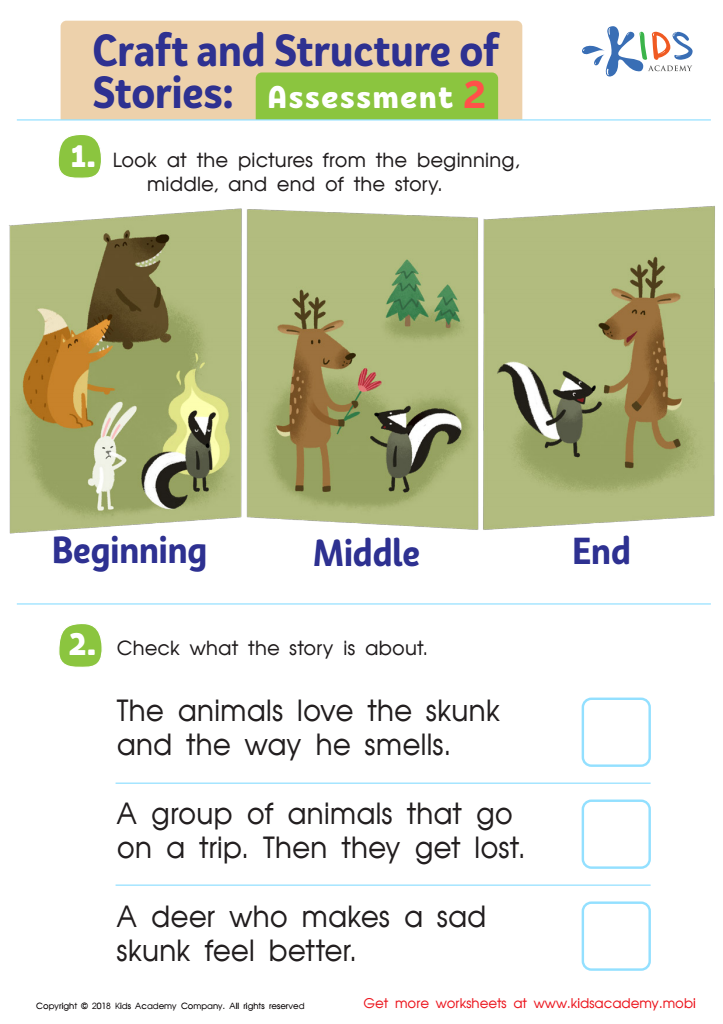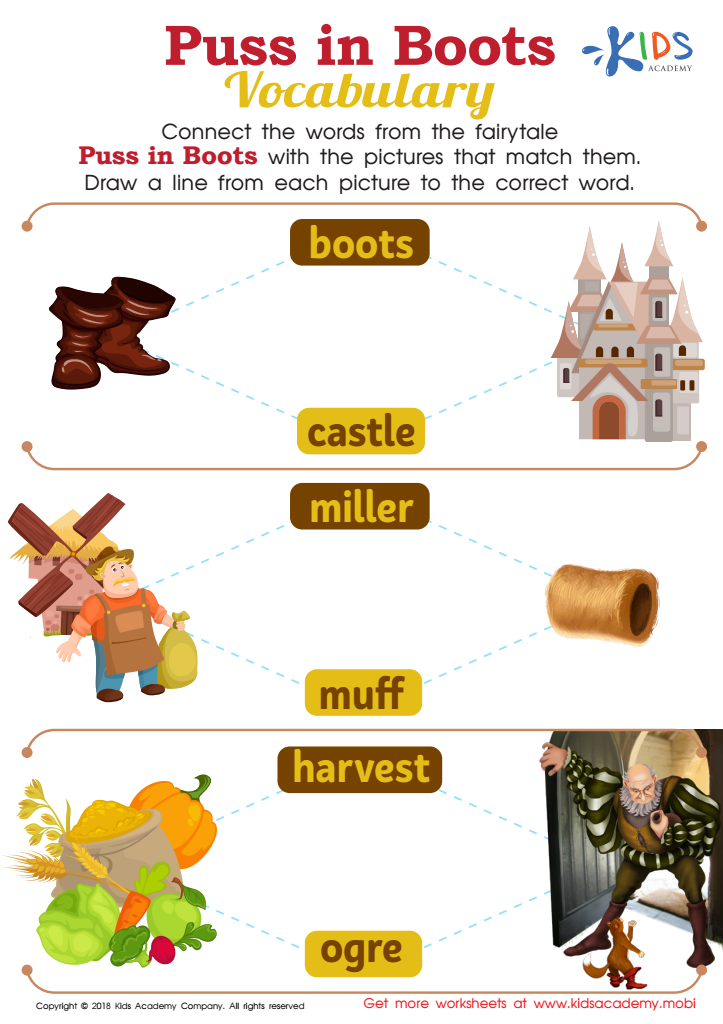Story analysis Normal Reading Comprehension Worksheets for Ages 5-6
3 filtered results
-
From - To
Unlock the power of storytelling with our "Story Analysis Normal Reading Comprehension Worksheets" designed specifically for children ages 5-6. These engaging worksheets encourage young readers to dive deep into stories, enhancing their ability to understand characters, settings, and plot details. Through fun activities and exercises, kids will develop critical thinking skills as they analyze stories and express their thoughts. Ideal for classroom use or at-home learning, these resources provide a perfect blend of education and enjoyment, shaping a love for reading. Embrace the adventure of comprehension with our thoughtfully crafted worksheets that make learning exciting and effective!


Key Details from the Princess and the Pea Worksheet


Craft and Structure of Stories: Assessment 2 Worksheet


Puss in Boots Vocabulary Worksheet
Story analysis and normal reading comprehension skills are crucial for early learners aged 5-6, as they lay the foundation for a child's future academic success and cognitive development. Understanding stories helps children become critical thinkers, enabling them to identify main ideas, themes, and character motivations. By engaging in story analysis, children learn to make connections between the text and their own experiences, fostering empathy and enhancing their emotional intelligence.
For parents and teachers, prioritizing story analysis is essential not only for developing literacy skills but also for cultivating a love for reading. At this age, children exhibit natural curiosity and imagination, and when these elements are nurtured through story analysis, it encourages lifelong reading habits. Additionally, comprehension skills aid in the development of vocabulary and language skills, which are pivotal as children progress to more complex texts.
Moreover, story analysis can be a fun, interactive activity that promotes bonding between parents and children or strengthens the teacher-student relationship. Through discussions about story details, characters, and plots, adults can help children articulate their thoughts, thereby building confidence in their own understanding. Overall, story analysis is a powerful tool to support learning and personal growth in early childhood.
 Assign to My Students
Assign to My Students




















